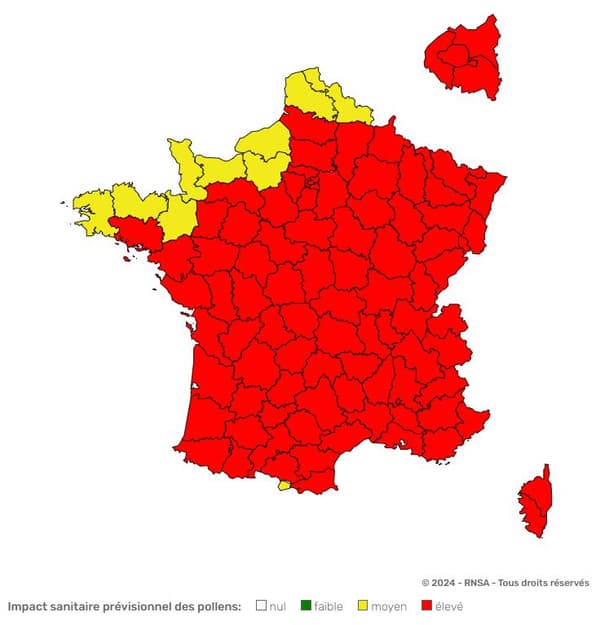To your tissues. The risk of grass pollen allergy remains “elevated” according to the latest update by the National Aerobiological Surveillance Network (RNSA) on Friday, May 24.
Most of France is in red – the highest risk level – except for some departments along the English Channel coast. Finistère, Côtes d’Armor, Ille-et-Vilaine, La Mancha, Calvados, Eure, Seine-Maritime, Pas-de-Calais, the North and, in isolation, Andorra, present a “medium” risk of allergies.
“Grasses are herbaceous plants that we see growing along roads, in fields and sometimes even on roundabouts! Some are very allergenic such as timothy, bluegrass, ryegrass, coltsfoot, fescue , fawn, rye, oats, wheat…”, explains the RNSA in a press release.

Its strong allergenic potential can cause intense symptoms in sensitive people, including “eye, nasal and even respiratory symptoms.”
The team of this association, created in 1996 and in charge of studying the biological particles present in the air, recommends carefully following the treatments prescribed by specialists.
Parietaria and olive pollens.
In addition to grass pollens, “in the Mediterranean, parietal pollens (Urticaceae) and olive pollens (Oleaceae) have a low to high allergy risk,” the RNSA also notes.
Before adding: “The risk of allergy will be low for other flowering grasses (plantain and sorrel) and for oak pollen. Pollen from pinaceae (pine, spruce, spruce, etc.) may yellow exterior surfaces, but not It’s allergenic.”
The network also advises not to stay under linden trees that are beginning to flower and which can therefore cause symptoms.
Grass pollen season began in early May. Despite the rains, which allow pollen to settle on the ground and alleviate allergies, these pollens should persist throughout France until August.
When the sun returns and high temperatures return, the situation could worsen. It should be noted that “during this period, episodes of air pollution can aggravate the symptoms of allergic people,” the RNSA wrote in early May.
Source: BFM TV

